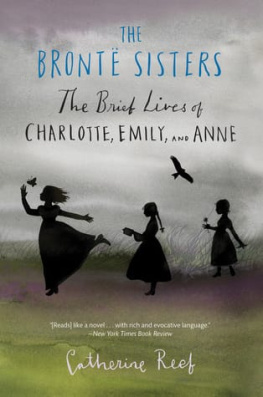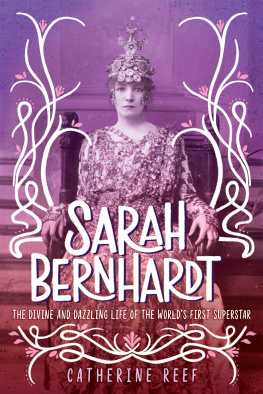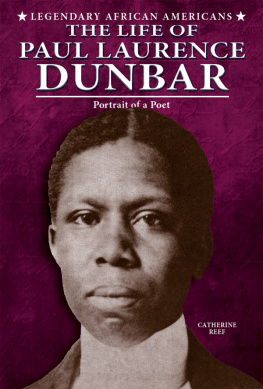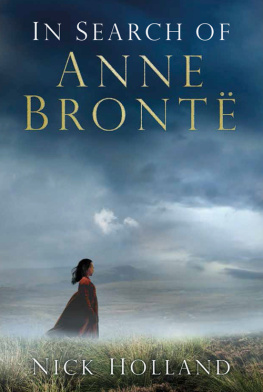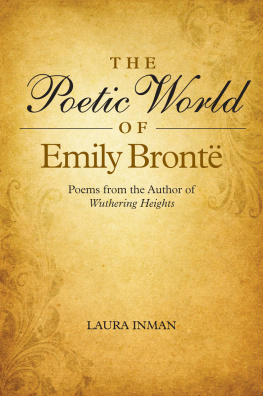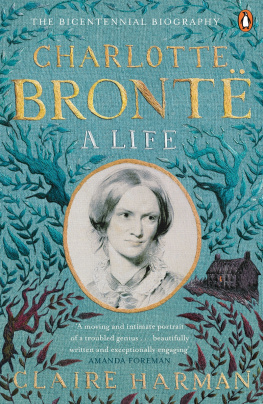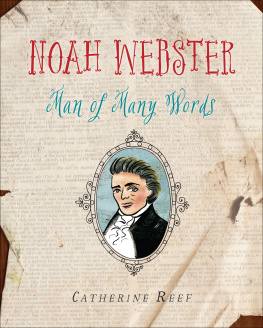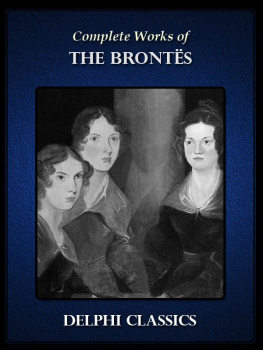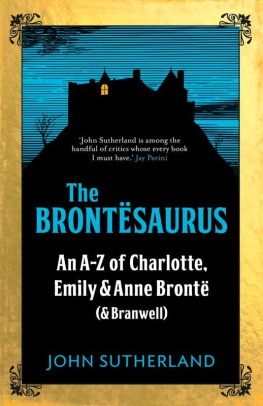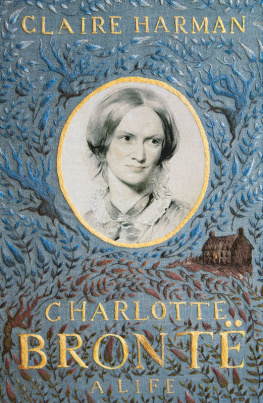Clarion Books
215 Park Avenue South
New York, New York 10003
Copyright 2012 by Catherine Reef
All rights reserved.
For information about permission to reproduce selections from this book, write to Permissions, Houghton Mifflin Harcourt Publishing Company, 215 Park Avenue South, New York, New York 10003.
Clarion Books is an imprint of Houghton Mifflin Harcourt Publishing Company.
www.hmhco.com
The Library of Congress has cataloged the print edition as follows:
Reef, Catherine.
The Bront sisters : the brief lives of Charlotte, Emily, and Anne / by Catherine Reef.
p. cm.
Includes bibliographical references.
ISBN 978-0-547-57966-5 (hardcover)
1. Bront, Charlotte, 18161855Juvenile literature. 2. Bront, Emily, 18181848Juvenile literature. 3. Bront, Anne, 18201849Juvenile literature. 4. Authors, English19th centuryBiographyJuvenile literature. 5. SistersEnglandYorkshireBiographyJuvenile literature. 6. Women authors, EnglishBiographyJuvenile literature. I. Title.
PR4168.R37 2012
823.809dc23 [B] 2011043559
eISBN 978-0-547-57547-6
v2.0714

For Karen Leggett, a friend to childrens literature
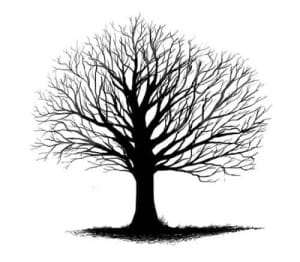
one
Oh God, My Poor Children!
T HE cobbled road clung to the steep hill as if holding on for dear life. Its paving stones had been set on end, forming a series of little ledges. The nervous horses felt for these rocky shelves to gain a footing; they feared slipping down as they hauled their heavy load.
It was April 1820, and a new clergyman was coming to Haworth. The Reverend Patrick Bront surveyed the scene. He told his wife and children that they were all strangers in a strange land.
Life was easy for no one in Haworthnot for horses, and not for people. Haworth, in northern England, was a dirty village of weavers cottages, where death came early. The soured earth barely fed some stunted bushes that struggled to stay alive. Few trees grew in this bleak place, where a sad wind constantly blew.
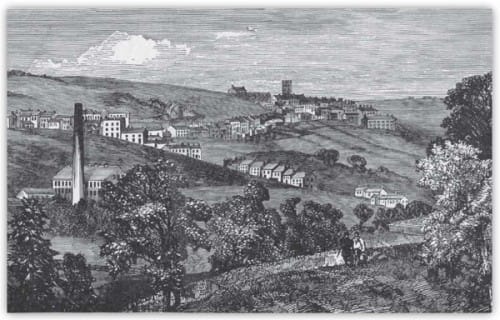
Haworth Church overlooks the village from its hilltop. The tower still stands, but a later clergyman had the rest of the church torn down and rebuilt between 1879 and 1881.
Beyond Haworth stretched miles and miles of moorland, that bare, hilly country of rough grass, moss, and bracken. The Bront children would learn to love this strange, wild land.
There were six children when the family moved into the parsonage at the top of the hill. Six-year-old Maria helped care for the younger ones, because their mother was ailing. Mrs. Bront had yet to recover from the birth of baby Anne, four months earlier, on January 17. The second child, Elizabeth, was five, and Charlotte, born on April 21, 1816, was turning four. Patrick Branwell (called Branwell) was not yet three, and Emily Jane, born on July 30, 1818, would be two in summer.
The children played quietly in an upstairs room while their mother, Maria Branwell Bront, wasted away. The nature of her ailment remains unclear. She might have had cancer, or she might have acquired a lingering infection after Annes birth. Antibiotics belonged to the future, so infections in the 1800s were often deadly. Her unmarried sister, Elizabeth Branwell, journeyed to Haworth from Cornwall, in the southwest, to nurse the sick woman.
The children turned to Aunt if they needed attention or care. They knew better than to bother their father in his study, where he wrote sermons and poems that taught moral lessons. In one poem, he revealed the dreary thoughts that ran through his head on a winter night.
Where Sin abounds Religion dies,
And Virtue seeks her native skies;
Chaste Conscience, hides for very shame,
And Honours but an empty name.
Then, like a flood, with fearful din,
A gloomy host, comes pouring in.
This tall, redheaded clergyman was born Patrick Brunty in what is now Northern Ireland. His father was a farm laborer who could barely read, but Patrick wanted more from life. So he read books, taught school at sixteen, and caught the notice of an influential minister. This man saw that with an education, Patrick might become a fine clergyman, so he sent him to college in Cambridge, England. It was rare for an Irishman, especially one with such humble roots, to attend college in nineteenth-century Britain, but Patrick was uncommonly bright and ambitious. He distanced himself from his home and family even more when he changed his surname to Bront, which sounded like the Greek word for thunder. He earned a degree in theology and was ordained a minister in 1806. He married Maria Branwell from Cornwall in 1812 and made England his home, returning to Ireland just once.
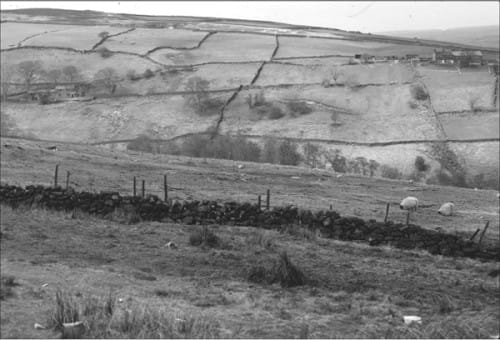
Open, rolling hills and blustery skies: this is the Yorkshire moorland.
On September 15, 1821, Maria Branwell Bront uttered her dying words: Oh God, my poor children! She became the first Bront laid to rest under the stone slabs of Haworths church. I was left quite alone, her grieving husband wrote, unless you suppose my six little children and the nurse and servants to have been company. His words implied that he did not. Hoping to marry again, he proposed to three women, one after another, but they all turned him down. None wanted a husband with a small income and a large family. Patrick Bront remained single, and Elizabeth Branwell stayed on to oversee her late sisters household.
Somber Aunt Branwell dressed in black. Like other country women, Aunt Branwell walked in pattens, or platforms of wood or metal strapped to her shoes. Most women wore their pattens outdoors, to raise their skirts above the mud and dirt, but Aunt wore hers in the house to keep her feet off the cold stone floors. There were few carpets in the parsonage, and no curtains hung on the windows, because the Reverend Bront had a great fear of fire. He kept a pail of water on the staircase landing to be ready to douse a flame in a moment.
Aunt Branwell taught the girls to sew while the Reverend Bront took charge of Branwells education. The clergyman had high hopes for his only son. He schooled Branwell in Latin and classical Greek, the subjects that formed the basis of a boys education. Branwell and his sisters read three daily newspapers and their fathers copies of Blackwoods Magazine. Blackwoods printed tales of country life, adventure, and ghosts. Charlotte was thrilled to read stories about Arthur Wellesley, the first Duke of Wellington. This great military leader had led the English forces in the 1815 Battle of Waterloo, in Belgium. England and its allies defeated Napoleon in this historic confrontation, ending decades of armed conflict between the English and French.
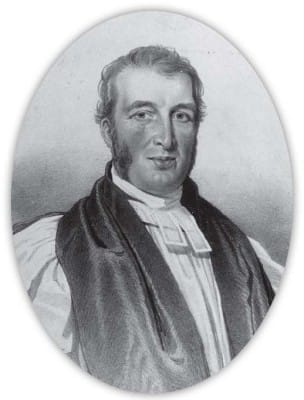
The Reverend William Carus Wilson founded the school at Cowan Bridge in January 1824, and Maria and Elizabeth Bront came as pupils six months later. Carus Wilson meted out discipline that was strict to the point of cruelty.
The children escaped from the parsonage whenever they could to ramble on the moor. In winter they clambered over hills of snow, and in warmer months they ran through banks of brown and purple heather. They learned the calls of grouse, swallows, and golden plovers, and at a favorite spot they plunged their hands into a cold, clear stream to fish for tadpoles. Anne and Emily named this place The Meeting of the Waters, after a lyric that Anne loved by Thomas Moore, an Irish poet and songwriter.
Next page
